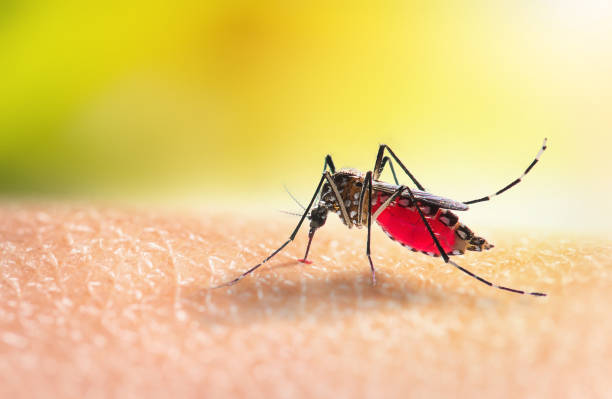
In 2017, malaria killed 435 000 people around the world. The vast majority of these deaths – 403 000 – were on the African continent. Most malaria cases are in sub-Saharan Africa.
My colleagues and I at the National Institute for Communicable Diseases track malaria cases and mosquito behaviour in South Africa.
As part of our research we have looked at three key aspects. One is the effect of human activity on mosquito biology. Here we looked at the effects of heavy metal pollution on various life history traits as well as the expression of insecticide resistance in Anopheles arabiensis, which is one of the mosquito species that transmits malaria.
We also did research into what impact changes in climate are having on the efficacy of insecticides aimed at malaria vectors.
And, finally, we looked at what the effect of higher temperatures is on the major malaria vector, An. arabiensis.
An. arabiensis is extremely difficult to control. Besides already reported insecticide resistance, they are prone to avoiding insecticide treated nets and walls. These mosquitoes also tend to bite people outdoors, where little can be done for protection.
Our work aims to understand the biology of this complex mosquito to track how changes in the environment are affecting the behaviour of this animal. This will hopefully inform malaria control strategies and bring us closer to eliminating the disease.
Toxins
The larval stage of the mosquito is aquatic. This vulnerable stage is crucial for the well-being of adult mosquitoes, in the same way that the health of a human baby will determine an adult’s future health.
Many larval environmental factors have a profound effect on the well-being of the adult mosquito. These include the environmental temperature, the level of crowding and access to nutrition. Human activity, however, has resulted in increased levels of water pollution, and mosquito larvae being exposed to more toxins.
This has a big impact on malaria transmitting mosquitoes. These insects usually breed in clean water, but have adapted to breeding in polluted water. This means that malaria vectors can now potentially increase their range to areas where malaria didn’t usually occur.
Our research shows that polluted water sources are becoming a breeding ground for mosquitoes that are tolerant to a range of toxins. We found that adult mosquitoes that were exposed to metal during the larval stage developed insecticide resistance.
Currently we do not know whether insecticide-resistant or susceptible mosquitoes are better at transmitting malaria. But polluting activities are resulting in range expansion and changes in selection procedures in mosquitoes.
Temperature on insecticides and mosquitoes
Further research we did suggests that high temperatures also affect the efficacy of certain insecticides.
Insecticides are commonly used as public health interventions against malaria vectors in some African countries including South Africa, Cameroon and Kenya. They are an important part of malaria control policies and strategies to eliminate the disease.
Our findings are important in efforts to determine the efficacy of insecticides currently used. But our study was based in a laboratory under controlled conditions, so our findings must still be tested in a real-life setting. This is because different temperatures could have different effects. Environmental conditions also vary and could have an impact on the efficacy of insecticides.
When it comes to mosquitoes, our research showed that temperature can have a significant impact on the life cycle of these insects. For example, climate change may affect the distribution of malaria vectors. We studied how rising temperatures affected major malaria vectors. We focused specifically on how insecticide-resistant vectors were affected versus vectors that are susceptible to insecticide.
Mosquitoes that develop resistance are more tolerant of high temperatures than those that aren’t resistant. This means that as temperatures rise, so do the survival odds of insecticide-resistant mosquitoes. This will complicate malaria control.
Why we should be worried
Human activities are driving mosquito evolution. Polluting activities are resulting in malaria-transmitting mosquitoes expanding into regions where they previous weren’t. Adaptation to water pollution results in increased tolerance to pesticides.
Insecticide resistant or tolerant mosquitoes cope better with more toxic pollutants. Currently it is not known if these mosquitoes are more likely transmit malaria than insecticide susceptible mosquitoes.
Scientists are only beginning to unravel what this could mean for the elimination of malaria.
This article is republished from The Conversation under a Creative Commons license. Read the original article here.


